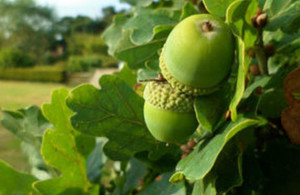Restrictions on oak imports introduced to guard against pests
Regulation banning movement of certain oak trees into and around England unless strict conditions are met

Picture credit: Getty Images
Restrictions on the import of most species of oak into England have been introduced as part of new regulations to protect native trees from the threat of Oak Processionary Moth (OPM)
The new regulations ban the movement of certain oak trees into the UK’s OPM Protected Zone (an area of the EU declared free of the pest) unless specific conditions are met. They cover both imports from overseas and movement of trees from areas of the country where OPM is already present – in London and surrounding counties.
The measures cover all oaks (Quercus) – with the exception of cork oak (Quercus suber) - which have a girth of 8cm or more at 1.2 metres above the root collar and are imported from either the EU or a third country or moving into the Protected Zone from other parts of England. This is because such trees represent the greatest likelihood of introducing OPM.
The regulations apply to all businesses which import and move oak trees.
Defra Chief Plant Health Officer Nicola Spence said:
Protecting our country from tree pests and diseases is vital to safeguard our environment, economy and our health.
That is why we are introducing tighter restrictions on the importation of oak trees to England, and the movement of oak trees out of certain parts of South East England which are infested with OPM.
Through investment, research and legislation we will continue to help protect our precious oak trees for years to come.
OPM caterpillars feed on oak leaves and can increase trees’ vulnerability to attack by other pests and diseases, making them less able to withstand adverse weather conditions, such as drought and floods.
The Forestry Commission, councils and land managers tackle the pest which affects Greater London and several surrounding counties with an annual control programme of tree treatment.
The new restrictions follow the launch of the Government’s first Tree Health Resilience Strategy in May which pledged tough action to protect the nation’s trees from pests, diseases and climate change. A key element of the strategy is the Action Oak campaign which seeks to protect the UK’s 121 million oak trees for future generations.
The new OPM legislation is published on gov.uk here
Notes to editors:
- The new legislation prohibits the movement of oak trees, with a girth of 8cm or more at 1.2 metres above the root collar, into the UK’s OPM protected zone unless one of these specific conditions are met:
-
That trees have been grown throughout their life in places of production in countries in which OPM is not known to occur;
-
That trees have been grown throughout their life in a protected zone which is recognised as such for OPM or in an area free from OPM established by the national plant protection organisation in accordance with ISPM No. 4;
-
That trees have been produced in nurseries which, along with their vicinity, have been found free from OPM on the basis of official inspections carried out as close as practically possible to their movement and official surveys of the nurseries and their vicinity have been carried out at appropriate times since the beginning of the last complete cycle of vegetation to detect larvae and other symptoms of OPM;
-
That trees have been grown throughout their life in a site with complete physical protection against the introduction of OPM and have been inspected at appropriate times and found to be free.
-
All oak trees moving into and within the OPM protected zone must already be accompanied by a plant passport regardless of the size of the consignment. And all landings of oak plants in England must be pre-notified to the plant health authorities.
-
For more information about OPM, including a map of the affected areas, visit the Forestry Commission website
-
People are also urged to report sightings of OPM to the Forestry Commission’s Tree Alert with a precise description of the tree’s location.